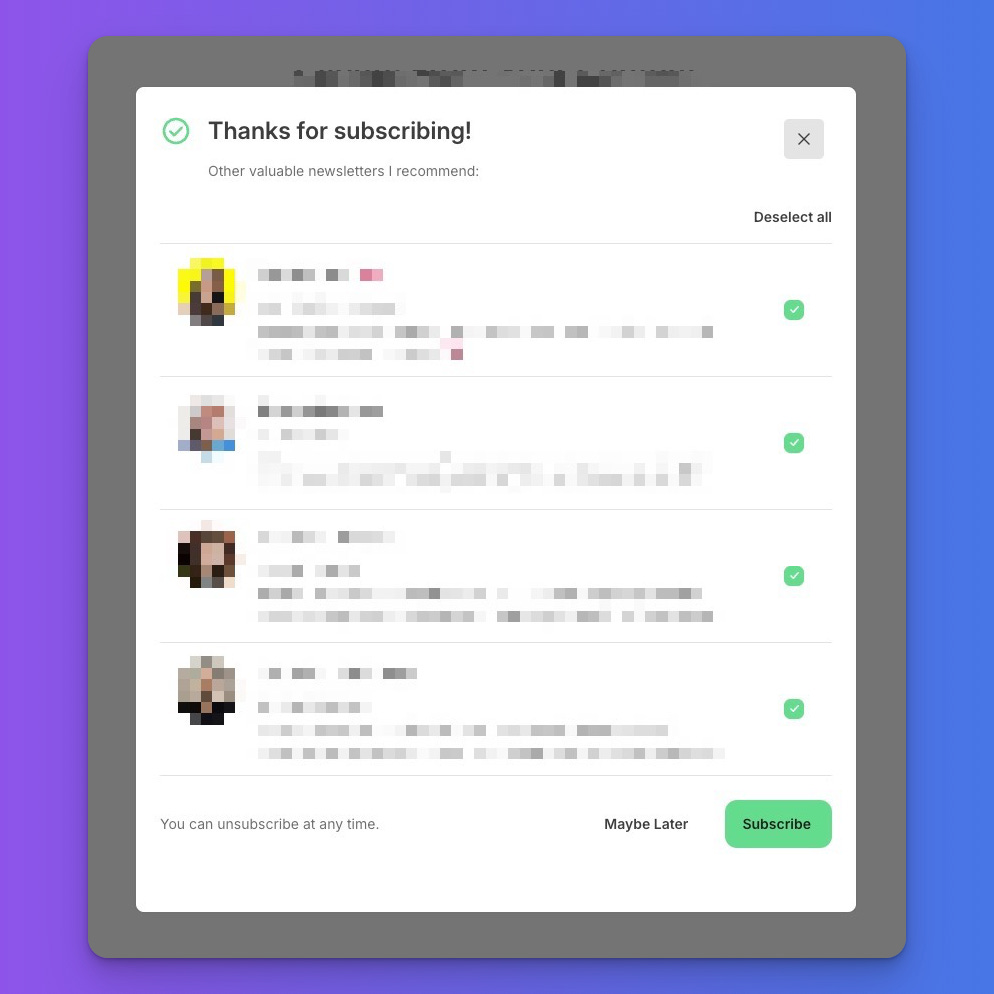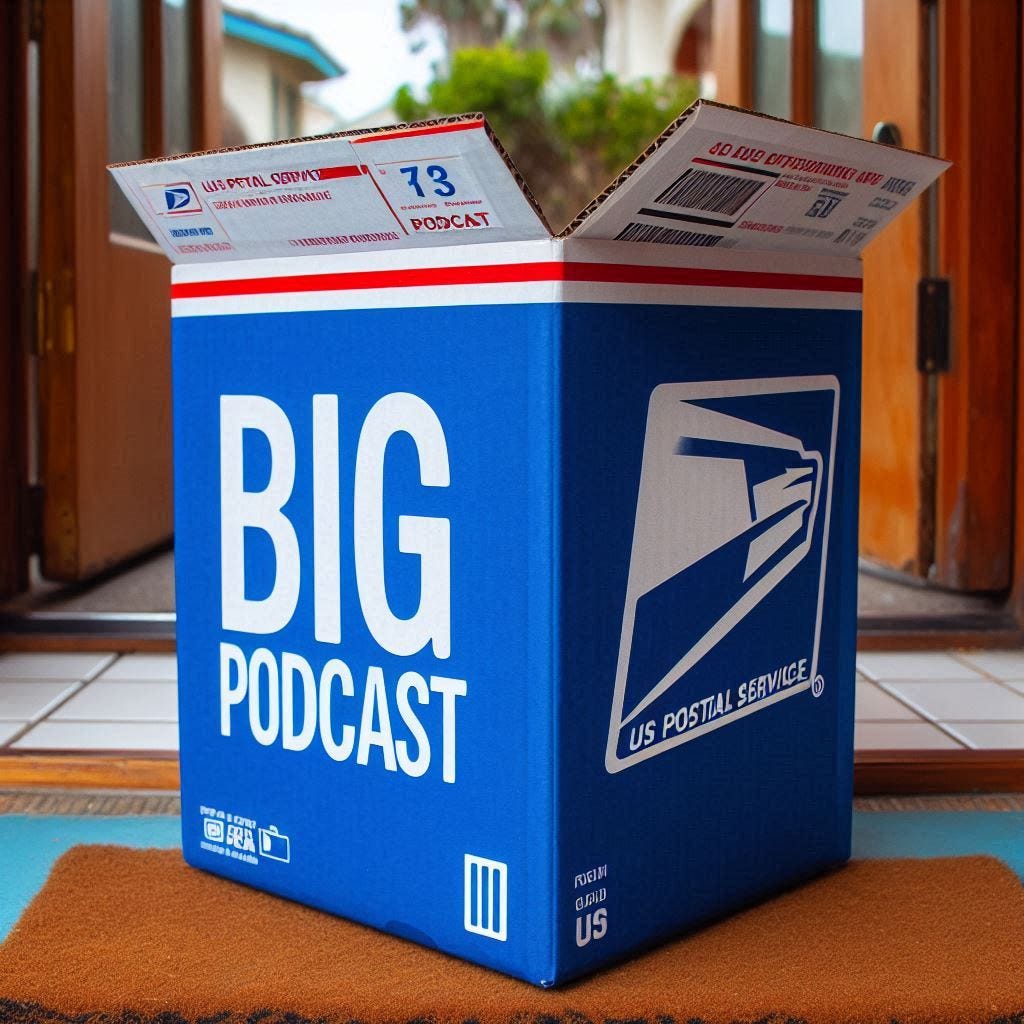Don't Build Your Email List Like This
If you’re signed up for an email newsletter or mailing list in the last couple of years, you’ve probably seen confirmation pages similar to this one:
The Pitch to Newsletter Owners
When a subscriber joins one list, that person will see curated recommendations for similar lists and can subscribe with one click. There are no extra forms to fill out.
You can be one of these recommended lists. You’ll get new subscribers from the momentum of others.
This is why you see so many of these “recommendation” offers.
Why Email Service Providers Offer this Service
Many Email Service Providers (ESPs) use tiered pricing based on list size, so as your audience grows, your monthly fee climbs with it. Bigger list owners also tend to send more emails and use more storage. The list trigger more analytics and automation events, all of which you pay for.
In short, the more subscribers you have on your list, the more ESPs will charge you.
Why You Should Think Twice About Using These Services
Lower-intent subscribers hurt engagement metrics
Recommendations are impulse clicks via a post‑subscribe page, so people join without a clear “why.” This often leads to lower open and click rates, which can drag down your sender reputation and land your messages in a spam or other “second class” folder.Consent clarity can be fuzzy
Even if it’s technically compliant, some subscribers don’t realize they opted into another list during rapid-fire signup sequences. Because of this, you’ll get more “I didn’t sign up” replies and higher spam complaints.Poor list quality degrades your ROI
Paying for “boosts” or spending time on cross-recs can net lots of email addresses, but you’ll have fewer true fans overall. You’ll spend more on mailing list costs and see weaker conversion rates for everything you send.Brand mismatch and audience dilution
Most recommendations from these services will come from newsletters that are loosely related to your topic and positioning. If your voice, frequency, or promises don’t align with what a subscriber originally signed up for, you train that person to ignore your emails.Operational overhead and dependency
You’ll need to keep pruning partners, tweaking filters, and watching metrics to make a system like this work well. If a recommendation platform shifts incentive structures or quality controls, the strength of your list can wobble overnight.
Bottom Line
Email Service Providers are the big winners here. The ego boost you get from additional subscribers to your email list will be short-lived at best, and at worst, you may hurt your relationship with true subscribers, since working with a “recommendation program” will affect the way you send email to them.




